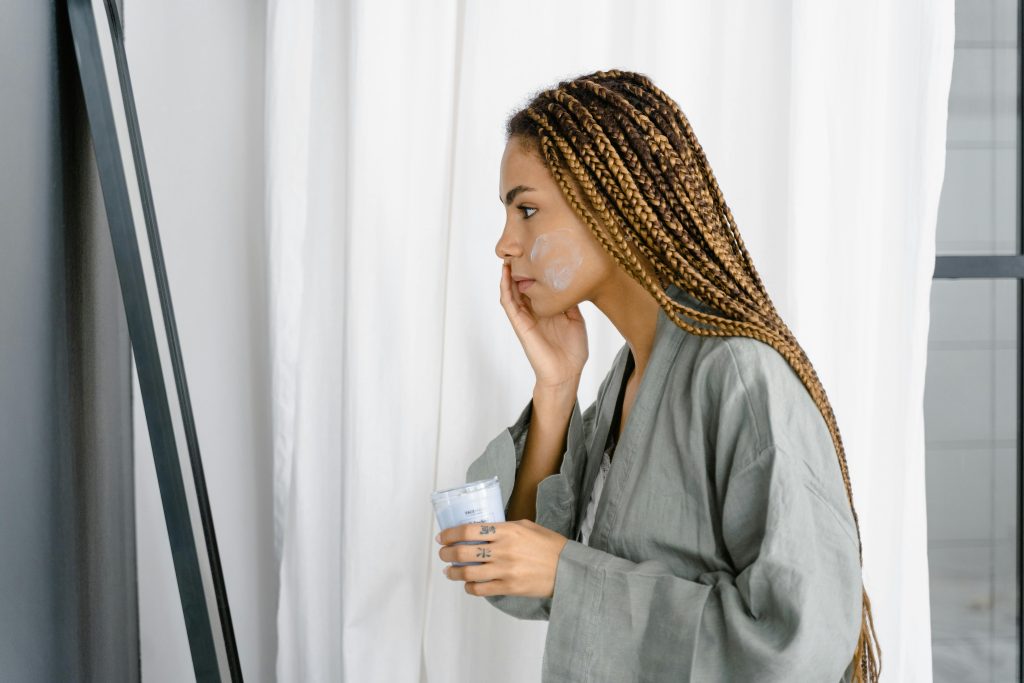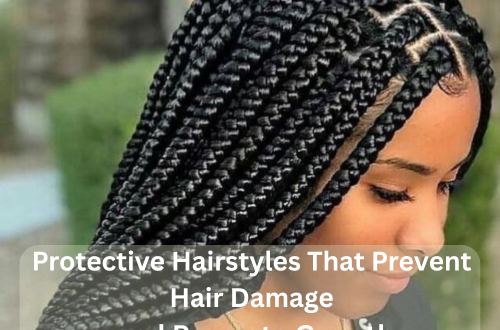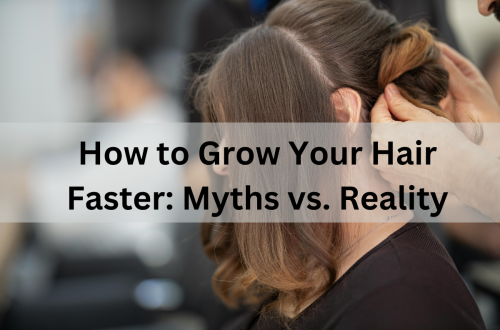
I recall the day I made the decision to go natural because, after years of relaxing my hair, I realized it was thinner, more brittle, and lacked the vibrancy it once had. I saw gorgeous, healthy natural curls on social media and thought, “Why not me?” However, I was unaware that it took patience, the right techniques, and a good haircare regimen to go from relaxed to natural hair without breaking. If you’re considering going natural, you’re in the right place because this guide will help you maintain length, embrace your curls with confidence, and transition from relaxed to natural hair.
What Does It Mean to Transition to Natural Hair?
When you make the switch to natural hair, you must take care of your new natural texture while progressively growing out your relaxed or chemically treated hair. Transitioning enables you to keep length as your natural hair grows in, as opposed to the big chop, which involves cutting off all of your relaxed hair at once.
Managing two distinct textures without causing considerable breakage is the challenge. However, you may effectively go natural while keeping your hair thick and healthy if you use the proper method.
Why Transitioning Instead of the Big Chop?
For the following reasons, many people decide to transition rather than get a large chop: • They wish to maintain their hair length while allowing their natural curls to grow out.
• They would rather make the adjustment gradually and are not ready for short hair.
• Before making a complete commitment, they require some time to understand how to maintain their natural texture.
To avoid breaking, tangling, and dryness, transitioning calls for constant attention. Now let’s explore how to do it correctly.
Step 1: Create a Plan for Transition
Establish a timeline before you begin your transition. Consider the following:
• How long do I wish to transition? Six months? A year?
• How long do I want to be before cutting off the relaxed ends?
• How will I take care of my hair while this is going on?
You’ll stay inspired and committed to your hair journey if you have a clear plan.
Step 2: Keep Your Hair Moisturized
Dryness is one of the main reasons for breakage during transition. Natural hair and relaxed hair require different amounts of moisture, and the weakest area of your hair is the demarcation line, which separates the two textures.
To avoid shattering:
• Apply hydrating shampoo and conditioner to both textures.
• To maintain silky, manageable hair, use a leave-in conditioner.
• Use natural oils such as argan, coconut, or jojoba to seal in moisture.
• To maintain hydration, try the LOC technique (Liquid, Oil, Cream).
Step 3: Detangling gently is the key
If not managed well, transitioning hair is prone to tangles and knots, which can cause severe breakage.
How to untangle hair that is transitioning:
• Always use a hydrating conditioner to detangle wet or damp hair.
• Instead of using fine-tooth combs, use your fingers or a wide-tooth comb.
• To prevent breakage, start at the ends and work your way up.
Never rush detangling; instead, take your time and be gentle with your hair.
Step 4: Trim Regularly to Get Rid of Relaxed Ends
Because damaged, relaxed ends may eventually fall off if not removed gradually, trimming is an essential element of transitioning.
How frequently should you cut?
• To keep your hair healthy, concentrate on removing split ends every 6-8 weeks
You’ll get closer to becoming completely natural the more you trim!
Step 5: Select Hairstyles that Protect Against Manipulation

Wearing low-manipulation hairstyles that lessen the strain on your hair is one of the finest methods to transition without breaking it.
The following are excellent protective hairstyles for transitioning hair: • Box braids (not too tight!)
• Twist-outs and twists
• Wigs and weaves (be cautious to properly hydrate the natural hair underneath) • Buns and updos
These styles help you handle the two distinct textures and safeguard your endings.
Step 6: Avoid Heat Damage
Curling wands and flat irons may seem like a quick remedy for blending textures, but excessive heat weakens and breaks your natural curl pattern.
When using heat, always use a heat protectant spray.
• Set the heat at low to medium.
• Don’t use heat styling more than once a month.
It will be simpler to adapt if you embrace your natural texture rather than continuously straightening it!
Step 7: Weekly Deep Condition
Maintaining the softness, manageability, and strength of transitioning hair requires deep conditioning.
The best deep conditioning methods for hair transitioning include: • Deep conditioners based on proteins to fortify the demarcation line.
• Deep conditioners that are high in moisture to avoid brittleness and dryness.
• Natural remedies made at home with aloe vera, avocado, and honey.
For optimal effects, try deep conditioning once a week.
Step 8: Use silk or satin to sleep
Cotton pillows become dry and break because they absorb moisture and create friction. For nighttime protection of your transitioning hair:
• Wear a scarf or hat made of satin or silk.
• If you would rather sleep with your hair loose, choose a satin pillowcase.
In terms of hair retention, this minor adjustment has a significant impact.
Step 9: Stay Patient and Be Kind to Your Hair
The process of switching to natural hair takes time. Managing two textures will be annoying on some days, but keep trying!
Keep in mind: • Pay attention to your hair; if it seems dry, hydrate it. Trim it if it’s breaking.
• Use caution when handling transitioning hair because it is delicate.
• small wins should be celebrated every inch of development is a step forward!
Conclusion: Accept the Transition to Natural Hair
The key to going natural without breaking is to be patient, take good care of your hair, and use the right procedures. You will love the transition process and have stronger, healthier curls if you follow these guidelines.
In retrospect, I wouldn’t exchange my experience growing my hair naturally for anything. Every trim, protective style, and deep conditioning session was worthwhile because of the self-love and confidence I developed. Accept your curls; they are just waiting to shine!
Are you currently transitioning to natural hair? Let me know your biggest challenge in the comments!






